During 2016, Crusoe College joined the Safe Schools Coalition (SSC) as part of our commitment to providing a safe and inclusive learning environment for all our students. SSC provides professional learning for school staff as well as resources for students and staff to support those who may be vulnerable as their identity is developing through their adolescent years.
Please see the Safe Schools website at https://sscv.org.au/ and the information below for further details.

FAQ about the Safe Schools Coalition
What is the safe schools coalition?
Safe Schools Coalition Australia has been funded by the Victorian Government since 2010 and the Australian Government since 2013 to support sexual diversity, gender diversity and intersex people in schools.
This is part of a national strategy to deliver on the aims of the National Safe Schools Framework, endorsed by all Ministers for Education.
Why do we have the safe schools coalition?
Every student has the right to feel safe at school. We know that safe, supportive and respectful learning environments lead to many positive impacts for students, including better academic outcomes, increased confidence and improved attendance. National and international research shows a supportive and inclusive school environment is essential for students to be healthy and happy and achieve their full potential.
We also know that 75 per cent of same sex attracted and gender diverse students experience verbal or physical abuse and that the majority of this abuse (80 per cent) occurs within schools. Parent engagement is encouraged and supported as part of the Safe Schools Coalition services to schools. In Victoria 16 per cent of member schools have joined as a direct result of parents’ requests.
The Victorian Government is providing an extra $1.04 million to Safe Schools Coalition Victoria. This additional money will help expand the program into every Victorian government secondary school by the end of 2018, supporting same sex attracted and gender diverse students, creating safe and supportive schools for all. Through this initiative, more schools will have access to evidence-based resources and training to make their schools safe and inclusive.
How will we ensure all government secondary schools are signed up by the end of 2018?
The majority of Victorian government secondary schools are already members of the Safe Schools Coalition. All government secondary schools will be members by the end of 2018.
However, given the recent misinformation campaign from a number of sources, it is understandable some schools and communities may feel uncertain about becoming members.
We will work with schools over the next two years to ensure the vital importance of this program is understood.
While all government secondary schools need to be signed up by 2018, they can decide which program resources they use, depending on the needs of the school community.
Schools that are safe schools coalition members can:
- request tailored professional development for all or some staff
- request guidance on creating supportive and inclusive school policies
- request assistance in setting up and developing student-led activities to create change
- request guidance on inclusive practice in all teaching and learning areas, including sexuality education
- request support in the process of affirming the gender identity of a transgender or gender diverse student.
Safe schools coaltion does not:
- Provide any materials which discuss or recommend specific sexual activities
- Teach sexual practices or chest binding or encourage students to cross-dress; rather it encourages tolerance and understanding
- Promote sexual “agendas”
- Teach sexuality education. The Safe Schools Coalition program is not, or does not replace, sexuality education. All government schools are required to deliver age appropriate sexuality education as part of the Health and Physical Education component of the Victorian Curriculum.
Safe schools coalition does:
- Support transgender and gender diverse young people to affirm their gender identity at school. This can include the student being able to wear the uniform and use the toilets that align with their gender identity
- Support schools to ensure all teaching and learning areas are inclusive and relevant to students who are same sex attracted, gender diverse or intersex
- Support the provision of advice that ensures young people have access to information so they can make informed choices.

